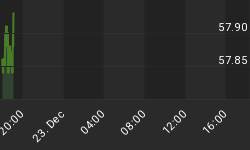Two things happen to cash savers (meaning pretty much everyone) when real interest rates get stuck below zero...
HOW HAS GOLD reached and breached new all-time highs in the absence of strong 1970s-style inflation?
The Buttonwood column in last weekend's Economist is only the latest analysis to miss the point, and despite tripping right over it, too.
"Owning gold is traditionally seen as offering protection against inflation. And inflation is very bad news for owners of government bonds.
"But the ten-year Treasury bond yields just 3.3%, a level that is towards the low end of the historical range...You would expect the performance of gold and Treasury bonds to be inversely correlated. When gold was at its real all-time high in 1980, the ten-year Treasury-bond yield was 10.8%. Fixed-income investors had suffered years of negative real returns in the 1970s."
But there's the rub, as we never tire of telling people here at BullionVault. They tire so quickly of hearing it, however, that even The Economist can't square the circle of rising gold, falling bond yields. Because it never was inflation alone in the '70s that drove people to buy or sell a lump of rare, indestructible metal. It was rather the rate of return offered by cash and bonds - those better competitors as a store of wealth, all things being equal - over and above (or below) inflation.

That's why gold made a terrible inflation hedge in the 1980s and '90s, most especially for Dollar investors. Because no-one needed an inflation hedge! Not when 10-year Treasuries paid 4.3% on average over and above CPI inflation. Not when the real Fed Funds rate averaged 3%-plus...leaving gold to drop three-quarters of its real Dollar value inside 20 years...as the real value of cash-on-deposit doubled.
Now compare and contrast with the last eight-and-a-half years. CPI inflation has averaged barely half its previous two-decade average, yet the real returns paid to bonds and cash have collapsed. Adjusted for inflation, in fact, the real Fed Funds rate has now been below zero for 54 of the last 101 months. That matches the 54 months of sub-zero real rates which the Fed delivered in the 1970s...

...but things are worse yet, of course. First because that decade's 54 months of negative real rates were spread across 10 full years from Jan. 1970. So second, the overall effect on the average real rate since 2002 has been to drive it lower again.
| Real Fed Funds | Overall ave. real rate | Neg. months | Neg. ave. |
| 1970-1980 | 0.01 | 54 | -1.49 |
| 2002 to date | -0.12 | 54 | -1.37 |
Short of a revolution in Fed thinking (no sign of that today), the decade starting Jan. 2002 looks set to deliver yet more negative real rates before 2012, if not beyond. Which will continue to mean that:
- Holding cash-on-deposit guarantees a loss of real value, something that even the most passive, cautious savers will only put up with for so long;
- The opportunity cost of holding gold or silver - the foregone interest you'd otherwise receive on cash - remains absent.
The monetary metals may not have been official money for many decades today. But the Fed's interest-rate policy is actively leading the remonetization of gold and silver as popular stores of value.
Because when "risk free" cash keeps paying a guaranteed loss, then a growing number of people will, in due course, start seeking shelter elsewhere. At the same time, holding gold and/or silver has ceased being a burden (bullion storage rates need not be onerous), inviting fresh flows of retained capital, tired of earning nothing or less.
Real returns to cash have now been low-to-negative for almost a decade, and so it might not be too long before a far broader, and thus larger, volume of savings turns from cash to the obvious and historic alternatives. Either that or the Fed will hike rates so high, you get 4% and more above inflation.
















